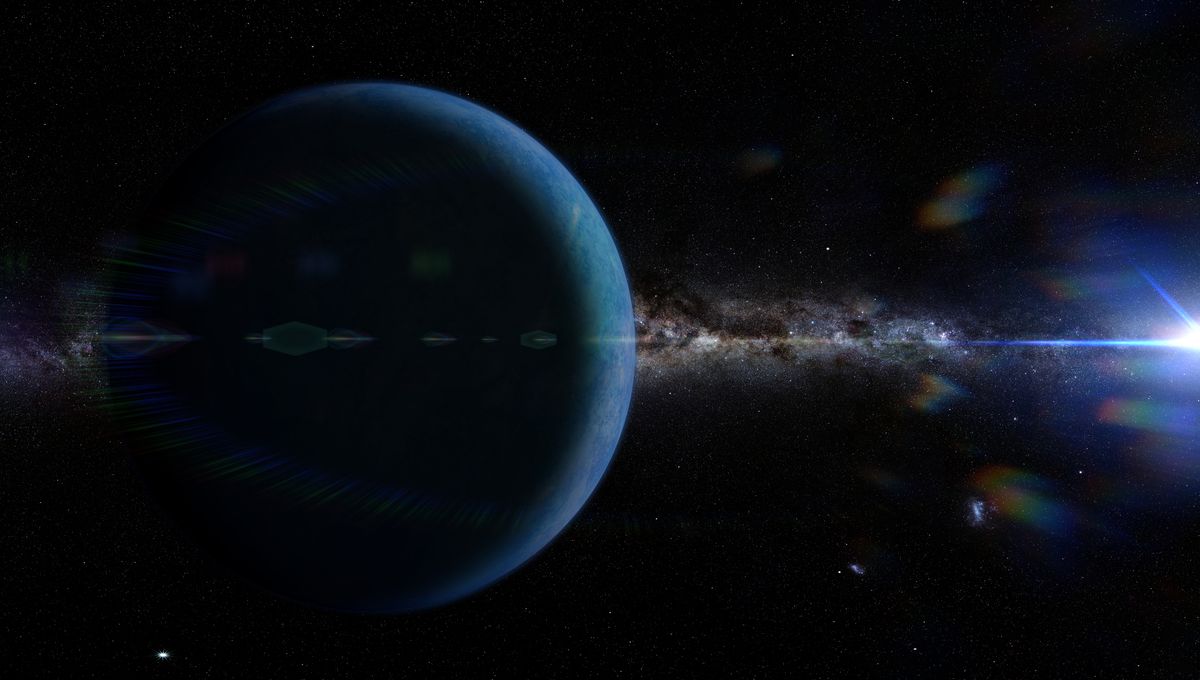
We have discovered thousands of exoplanets in the last few decades, while the number of planets in the Solar System has remained at eight – but our discovery of more might not yet be over.
A team of researchers say they have found the “strongest statistical evidence yet that Planet 9 is really out there”, after studying a population of distant, unstable objects that cross Neptune’s orbit.
In 2015, two astronomers from Caltech presented evidence that six objects past the orbit of Neptune were bunched together in a way that suggested they were being “herded” by something with a large gravitational pull.
Despite suggestions the planet could be due to a statistical anomaly and selection bias, the team believes the objects could be moving due to the influence of a large object beyond Neptune’s orbit.
In a recent paper, the team looked at long-period objects that crossed the path of Neptune’s orbit, finding that their closest point of orbit to the sun was around 15-30 astronomical units (AU), with one AU being the distance between the sun and the Earth.
Carrying out simulations to try and discover what best explains the orbits of these objects, the team found that a model that includes a massive planet beyond the region of Neptune explained the steady state of these objects much better than in simulations where planet 9 was not included.
Though this is intriguing, the analysis does not narrow down where to look for such a planet.
It is also not the only possible explanation for the unusual orbits of trans-Neptunian objects. Another team believes it could be down to a close encounter, where a star passed by our own Sun several billion years ago in our history.
The team ran 3,000 simulations of scenarios where stars of various masses passed by our own at different distances. Though we have only discovered an estimated 1-10 percent of TNOs, making further observations and study of their orbits necessary for a full explanation, the researchers found that a close flyby of a slightly smaller star than our own could produce a Solar System that looks remarkably similar to how it looks today.
“The best match for today’s outer Solar System that we found with our simulations is a star that was slightly lighter than our Sun – about 0.8 solar masses,” Amith Govind, co-author of the “close encounter” hypothesis paper, explained in a statement. “This star flew past our sun at a distance of around 16.5 billion kilometres [10.3 billion miles]. That’s about 110 times the distance between the Earth and the Sun, a little less than four times the distance of the outermost planet Neptune.”
Thankfully, we might not have too long to wait for either hypothesis to be further tested.
“Excitingly, the dynamics described here, along with all other lines of evidence for Planet 9, will soon face a rigorous test with the operational commencement of the Vera Rubin Observatory,” the authors of the Planet Nine paper concluded. “This upcoming phase of exploration promises to provide critical insights into the mysteries of our solar system’s outer reaches.”
The “Planet Nine” study is published in The Astrophysical Journal Letters and the “close encounter” study in Nature Astronomy.
An earlier version of this article was published in April 2024.
Source Link: Is “Planet 9” Out There? Astronomers Find Evidence Of Massive Object Beyond Neptune’s Orbit